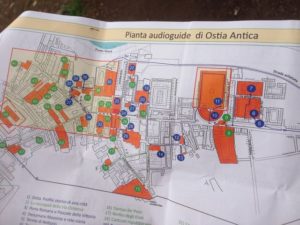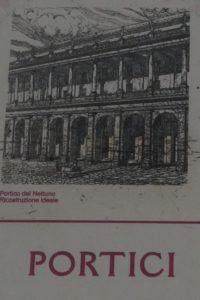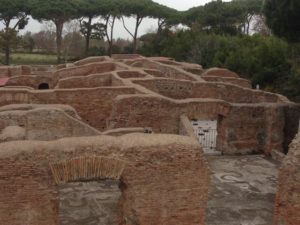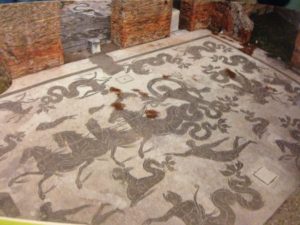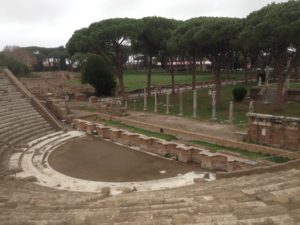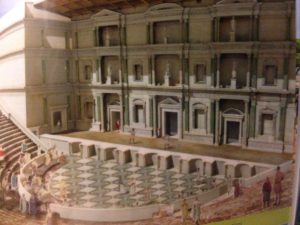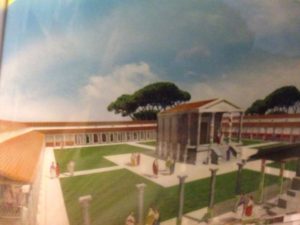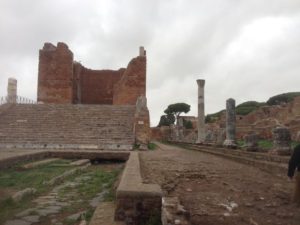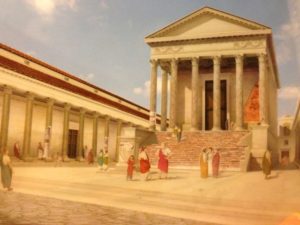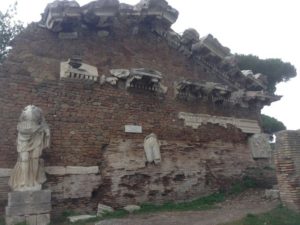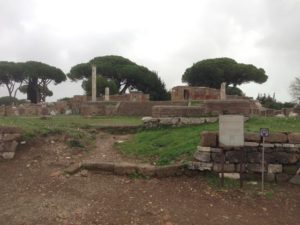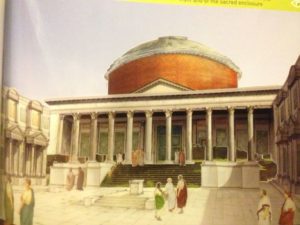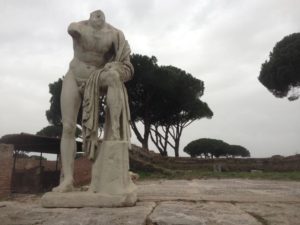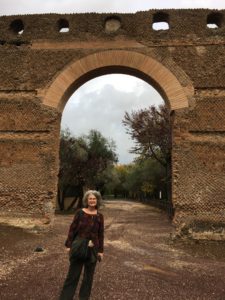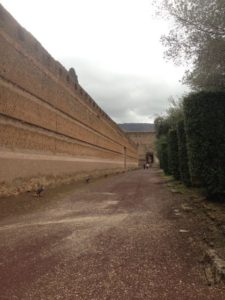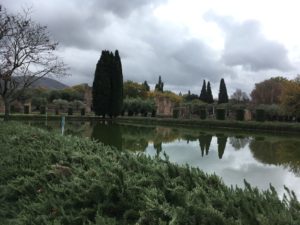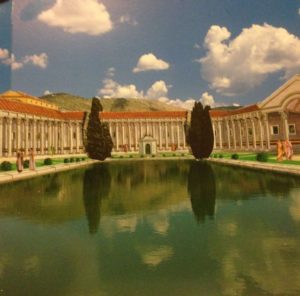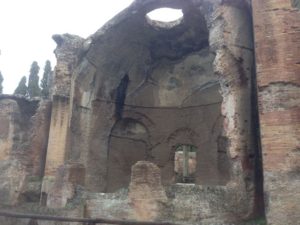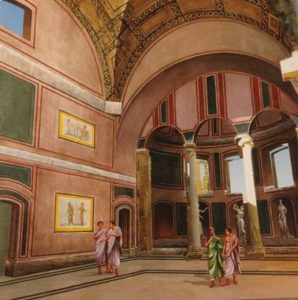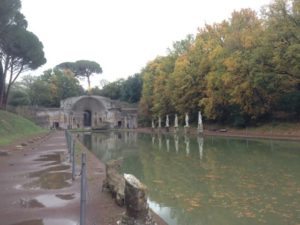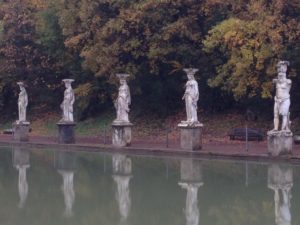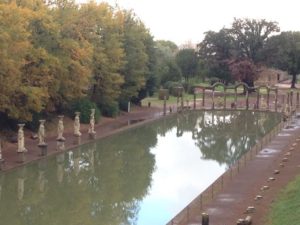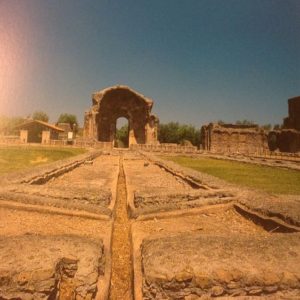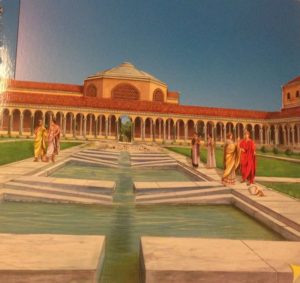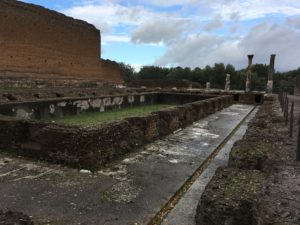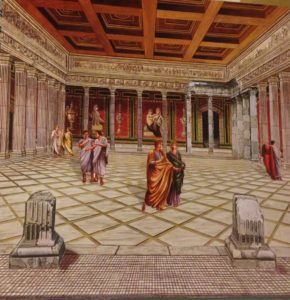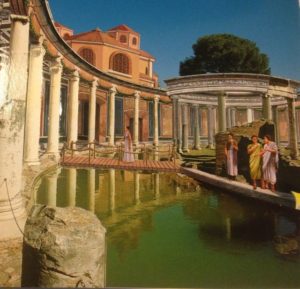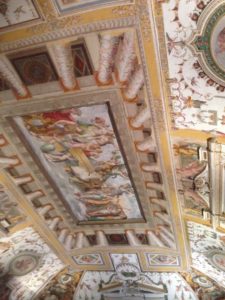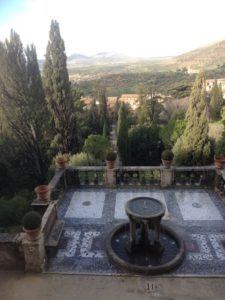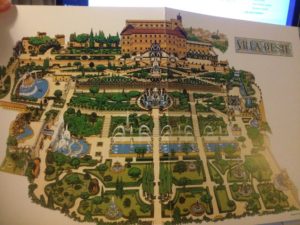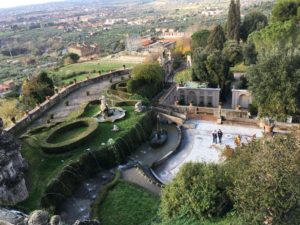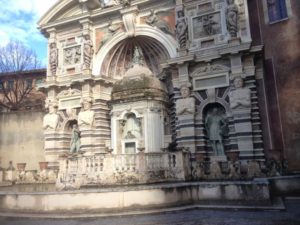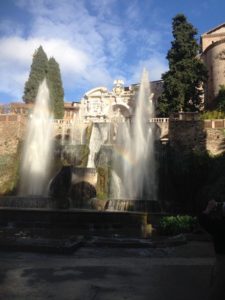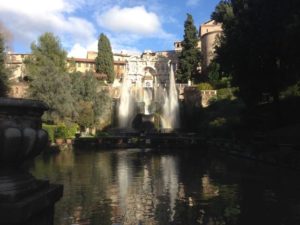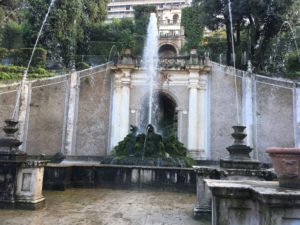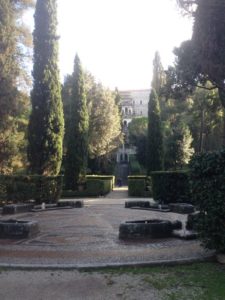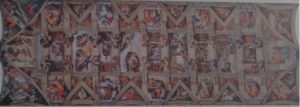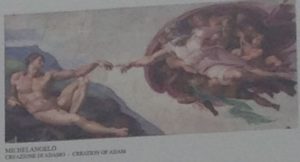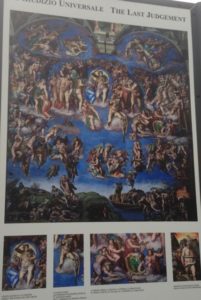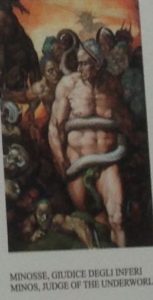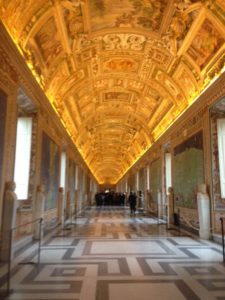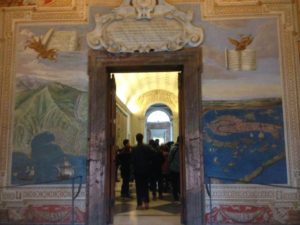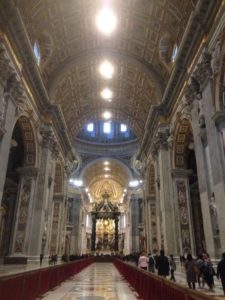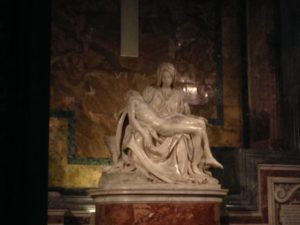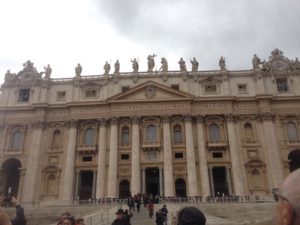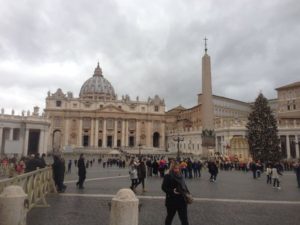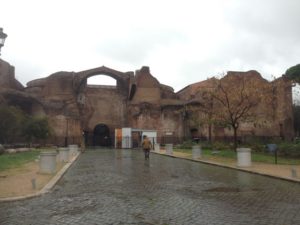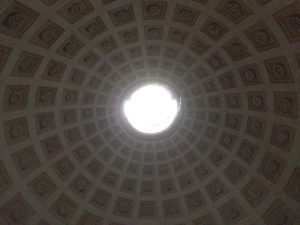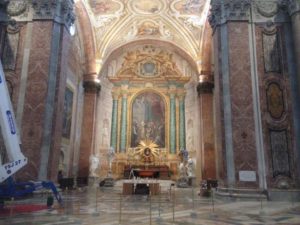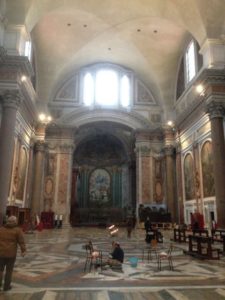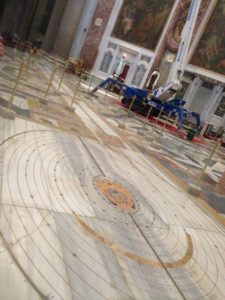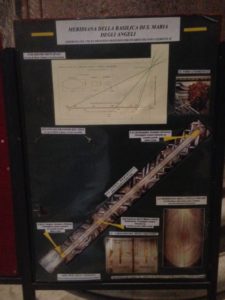There was a bit of a bump getting off the boat on Monday because the port in Civitevechia was closed due to high winds, so they took us to Naples instead and bused us back to Rome. Luckily, they had one bus that went directly to Termini, where we caught a cab to our hotel, Hotel Montecarlo, which at 10:30 at night was the way to go (10E with tip). The concierge recommended a restaurant two minutes down the street, and we had a lovely dinner of roast chicken, truffle fettuccine, and 1/2 liter of white wine for around twenty dollars.
On Tuesday we slept in a bit and took off for Ostia Antica just before noon. It was an easy jaunt to the blue line metro just down the street to Piramide (San Paulo) where we caught the train toward Ostia Antica (direction Roma Lido). One 1.5 E ticket for the whole trip of maybe 30 min. To get to the archeological site, just walk straight from the station for 5 minutes.
Ostia Antica was the ancient harbor town on the Tiber that supplied Rome. It dates back to the Etruscans and before (8th century BC). In the 4th century BC, Ostia was the first colony of Rome, intended to control the river route. It then became a military headquarters and evolved into a commercial center with huge grain warehouses filled with wheat and other goods destined for Rome. The Roman road led 16 miles from Porta San Paulo (where we caught the train) to Ostia. 
We were amazed at the size of the site (at least 3 hours needed to explore it) and how few people were there. You enter the site through what had been the cemetery outside the city walls.
In the first century AD, the entrance would have been lined with covered porticoes.
One of the first large structures is the Neptune Bath complex with its gorgeous black and white mosaics.
The theater, which seated 4000 people would have had a backdrop of columns and statues.
It faced the Portico of Corporations, a roofed double arcade of columns surrounding a garden.
Each shop had mosaics out front.
The Forum (early 1st century AD) was the center of political life where citizens came to discuss news of the empire.
The Capitoleum (120 AD) that faced out onto the forum had six fluted columns and statues of Jupiter, Juno, and Minerva.
The Temple of Rome and Augustus, built by Tiberius, faced the Capitoleum.
The Round Temple (3rd century) was round like the Pantheon in Rome.
It had a porch with Corinthian columns and two spiral staircases that led to the dome.
The tavern of the fishmongers has a mosaic of a dolphin swallowing an octopus.
Two columns mark the entrance to the meat market.
The first Christian basilica in Ostia from the second half of the 4th century.
The Temple of Hercules just outside the city walls.
It’s remarkable to imagine this busy market town thriving from the first century BC to the 4th century AD. The port eventually silted up and the town was abandoned. Ostia Antica is definitely worth a day trip from Rome.




